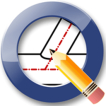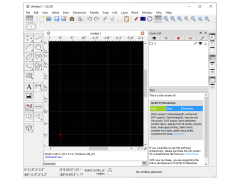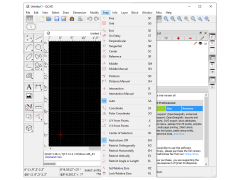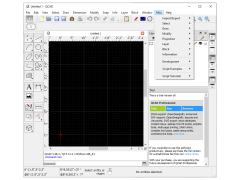QCAD - the system of the automated designing (CAD), intended for creation of two-dimensional drawings, plans, schemes and complex diagrammes. The program interface consists of separate panels that can be freely moved and scaled. Most often, you will use the drawing toolbar while working with QCAD. It contains a wide variety of line types (auxiliary and main), shapes, arcs and circles. Fill, hatch and footnote tools are also available. In total the given CAD contains an order of forty tools of construction of the drawing and twenty tools of measurement.
The program automatically creates specifications and can generate an explanatory note template. It provides the ability to work with bitmap images, and also supports export to DFX, DWG, DGN, BMP, SVG and PDF formats. As well as any other "serious" system of the automated designing, QCAD is able to work with layers. For the user's convenience, all the functions of controlling them are placed on a separate panel.
QCAD allows for the simplified creation of detailed 2D drawings, plans, and diagrams with the help of extensive construction and measurement tools.
When building a drawing/plan of any complexity you will probably need a library with ready-made details, which is quite extensive in this program and includes more than four thousand objects. There are also about thirty font styles available for text blocks.
QCAD supports British and metric units of measurement, and switching between them takes place literally in a couple of clicks, can be controlled from the command line and allows you to print projects at a given scale. The program itself is paid for, but you can use the demo version to get acquainted with it.
- is intended for creating drawings, schemes and complex diagrams;
- contains about forty construction tools and twenty measurement tools;
- offers a huge library with ready-made parts, frames and types of fonts;
- supports layer work;
- allows you to set up object binding;
- supports export in DFX, DGN, BMP, DWG, PDF and SVG formats.
PROS
Provides excellent learning resources and community support.
Highly customizable and user-friendly interface.
CONS
No support for 3D modeling.
Can be slow and sluggish on older computers.








